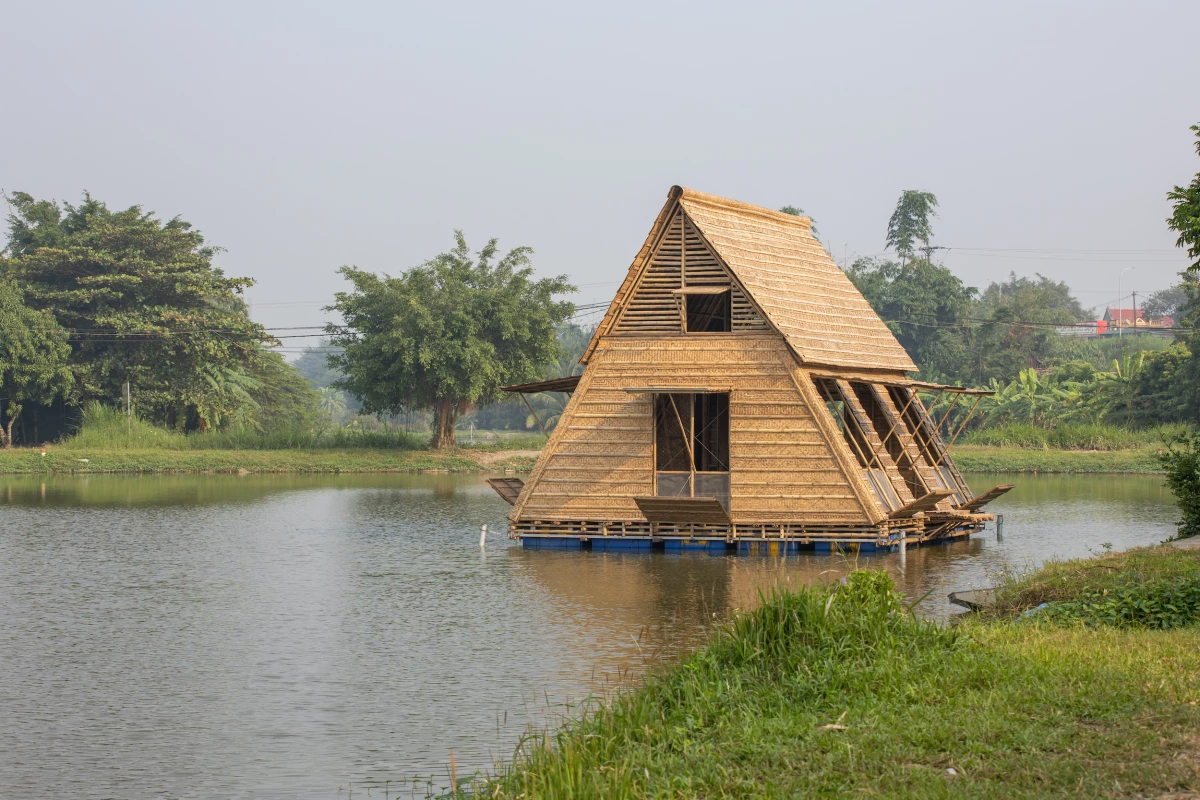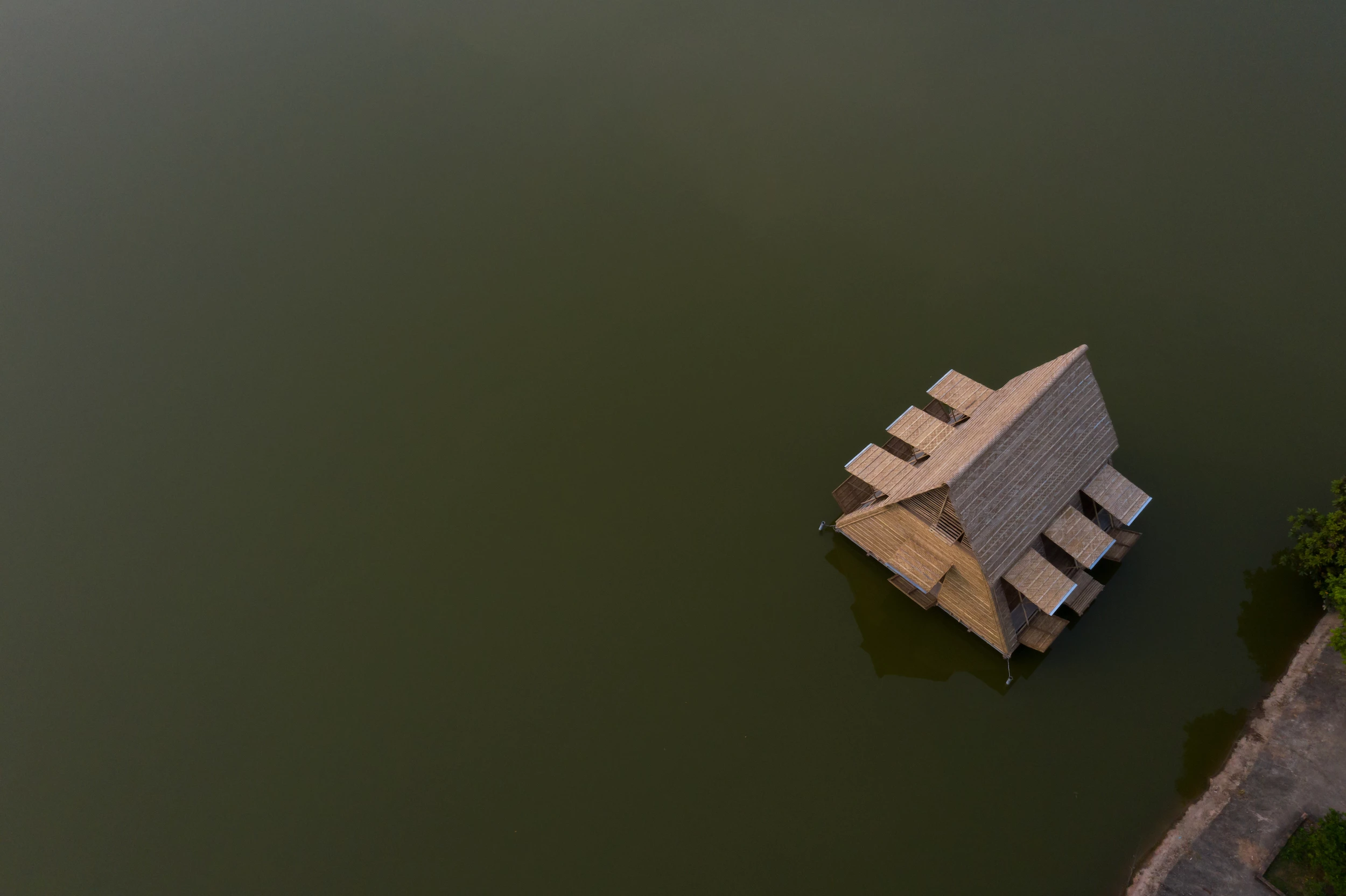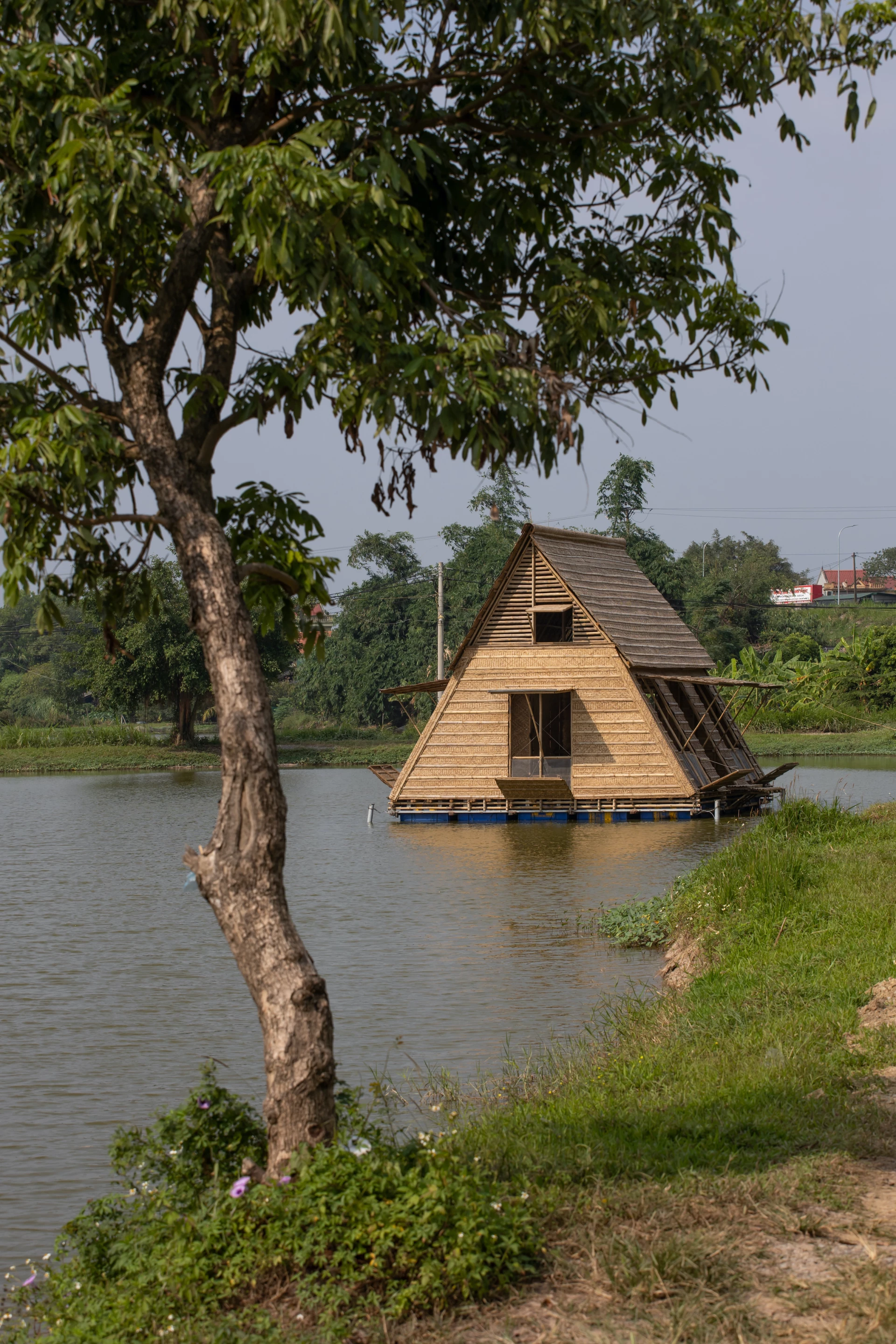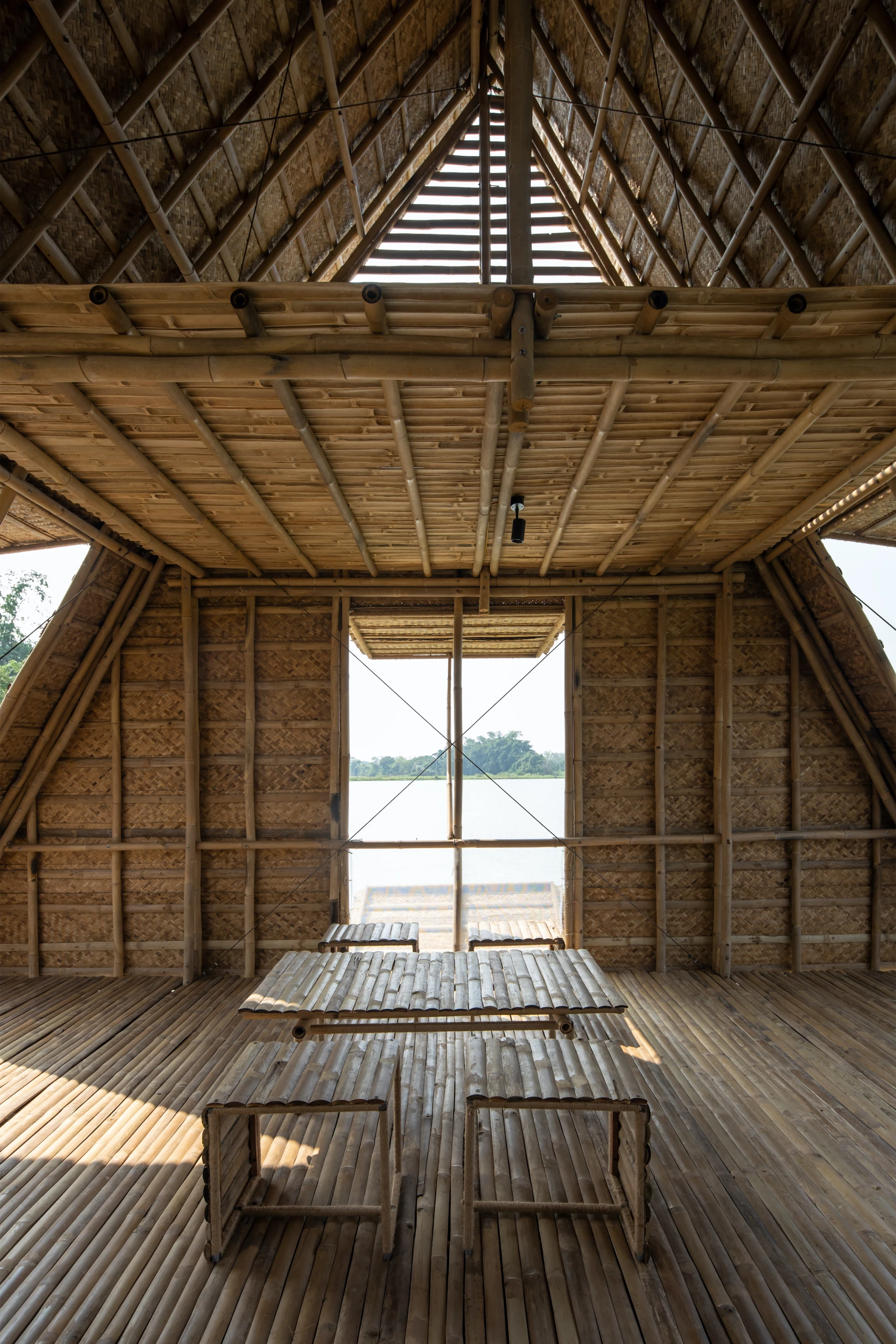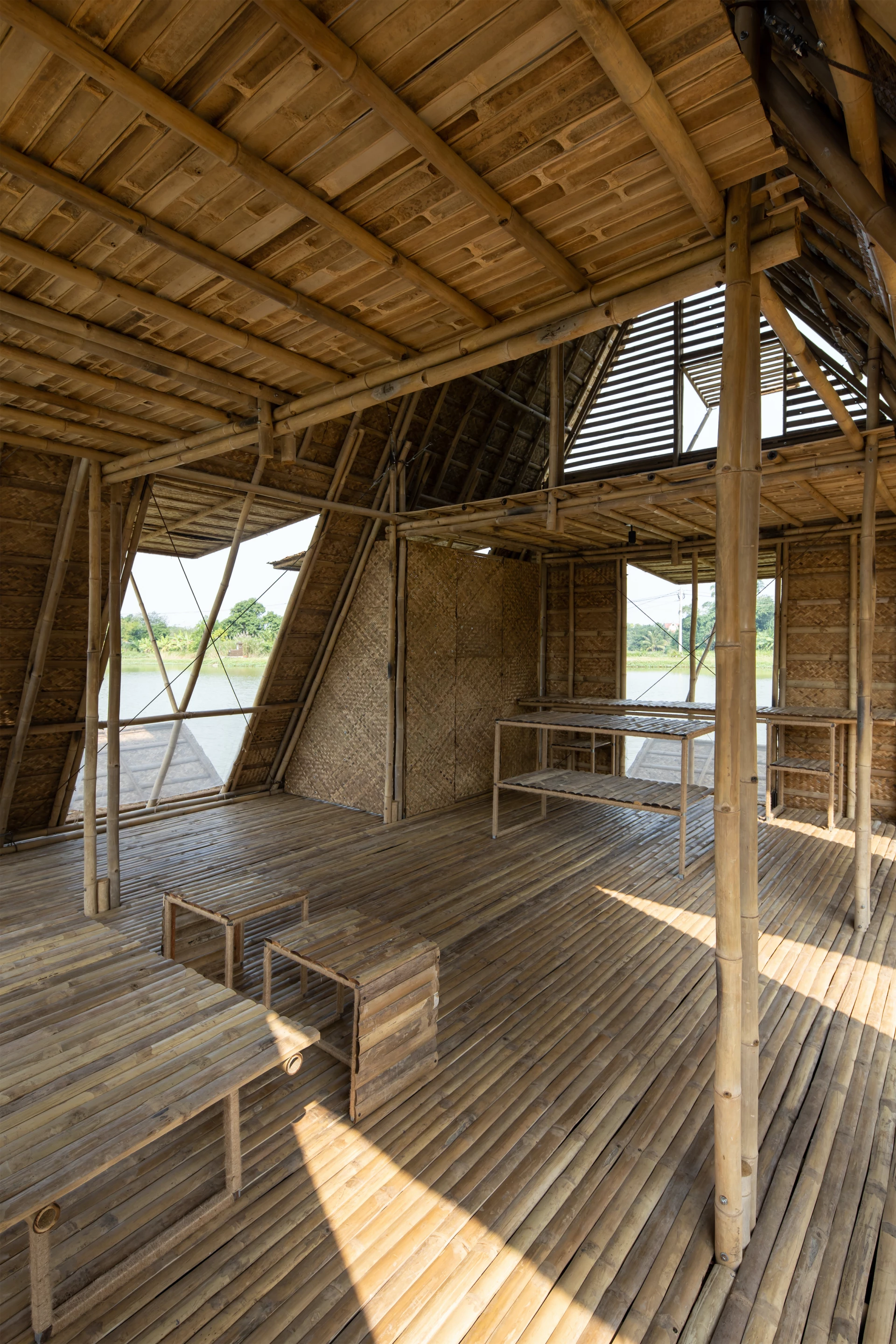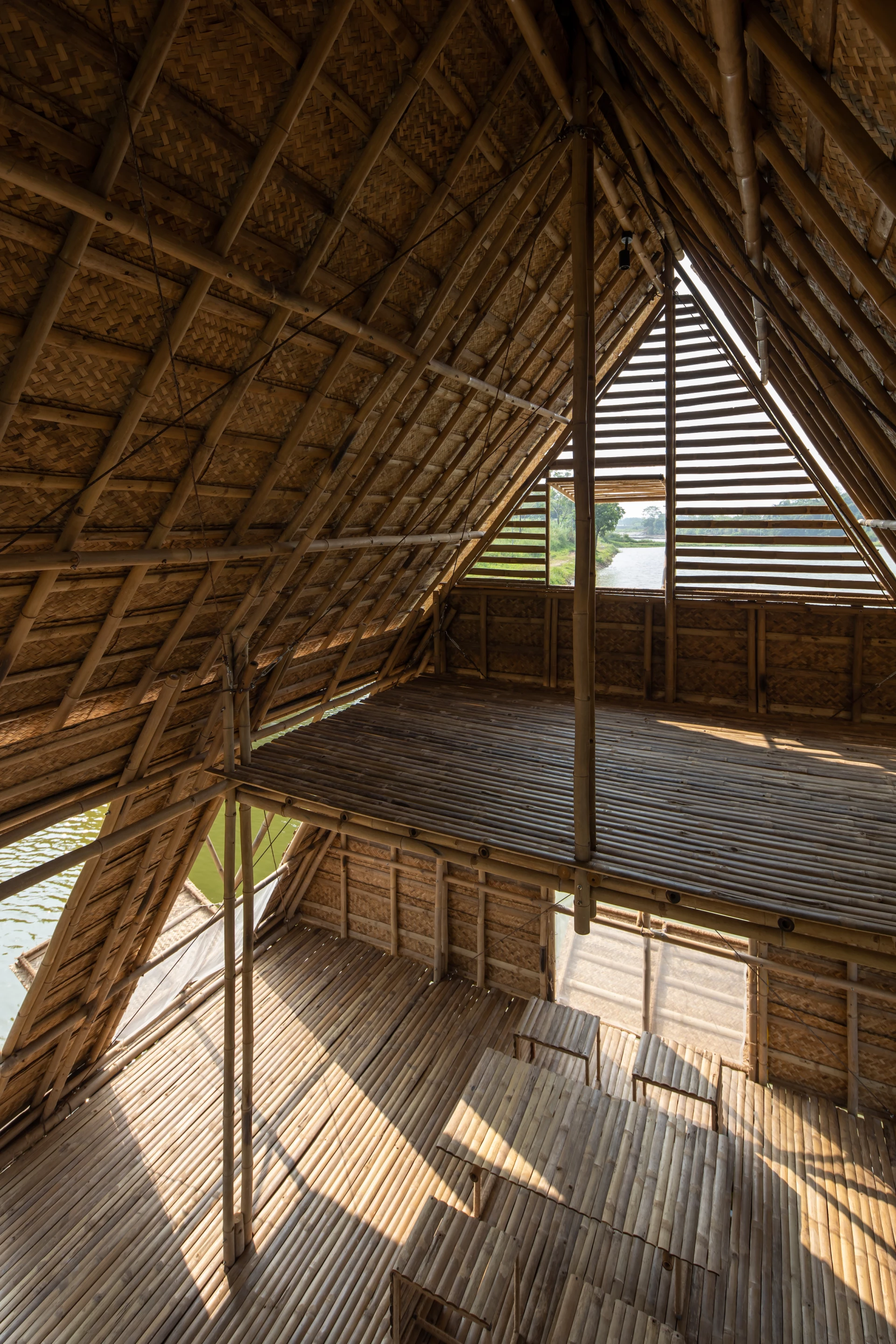Longtime readers may recall the Blooming Bamboo flood-resistant home by H&P Architects. A decade later, the Vietnamese firm has produced a somewhat similar prototype bamboo floating dwelling envisioned for river-based populations under threat from climate change, especially those living on and around Vietnam's Mekong Delta.
The Floating Bamboo House is constructed from bamboo stems, as well as lightweight materials like compressed weaved bamboo sheets, leaves, corrugated iron, and bamboo screens. All of this is joined together using simple latches and ties, and it floats using plastic drums attached to the home's underside.
"Vietnam is one of the hardest-hit countries in the world by climate change," explained H&P Architects. "As forecast, 47 percent of the Mekong Delta area and 13 percent of the Red River Delta area will be submerged by the sea level rise of 1 meter [3.2 ft], directly affecting from 20 to 30 million people. In this context, FB House is believed to provide a useful alternative for millions of poor households to, as soon as possible, create a stable and safe accommodation themselves, and adapt to the worst scenario of responding to climate change."
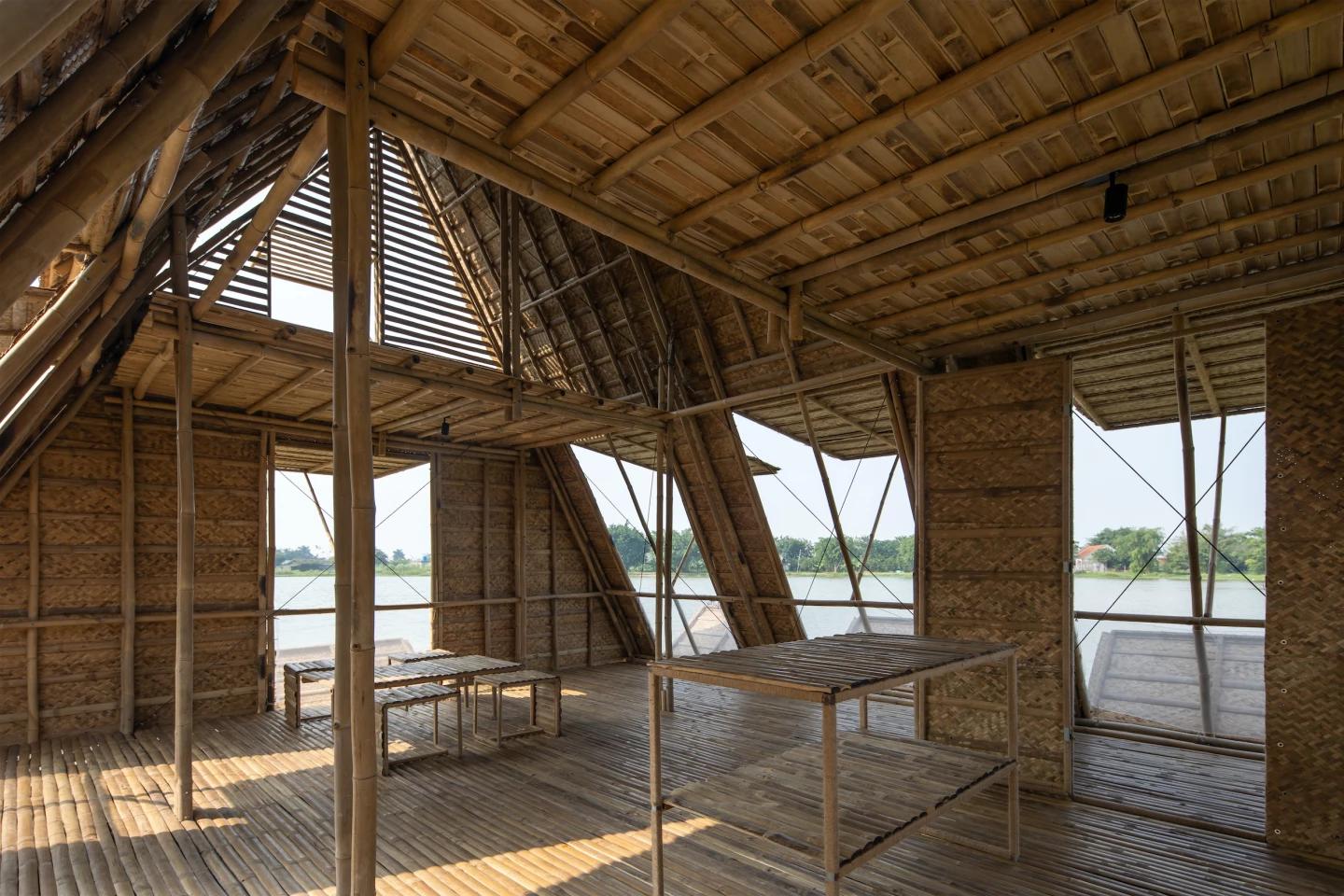
The Floating Bamboo House measures 36 sq m (roughly 390 sq ft) and features a flexible interior layout spread over two levels. Though very basic in this prototype stage, it will eventually include a kitchen area, as well as a bathroom and bedrooms, and have freshwater storage tanks and septic tanks installed.
Additionally, the upstairs floor panels can be removed, opening up the space for use as a classroom or library instead. Its facade also opens up in multiple places, maximizing daylight and natural ventilation, and it's topped by a large roof that will feature a rainwater collection system and solar panels.
The Floating Bamboo House pictured is actually the second iteration of prototype model produced by H&P Architects. As of writing, we're awaiting more details on its future plans and when we can expect to see it completed and in use.
Source: H&P Architects
